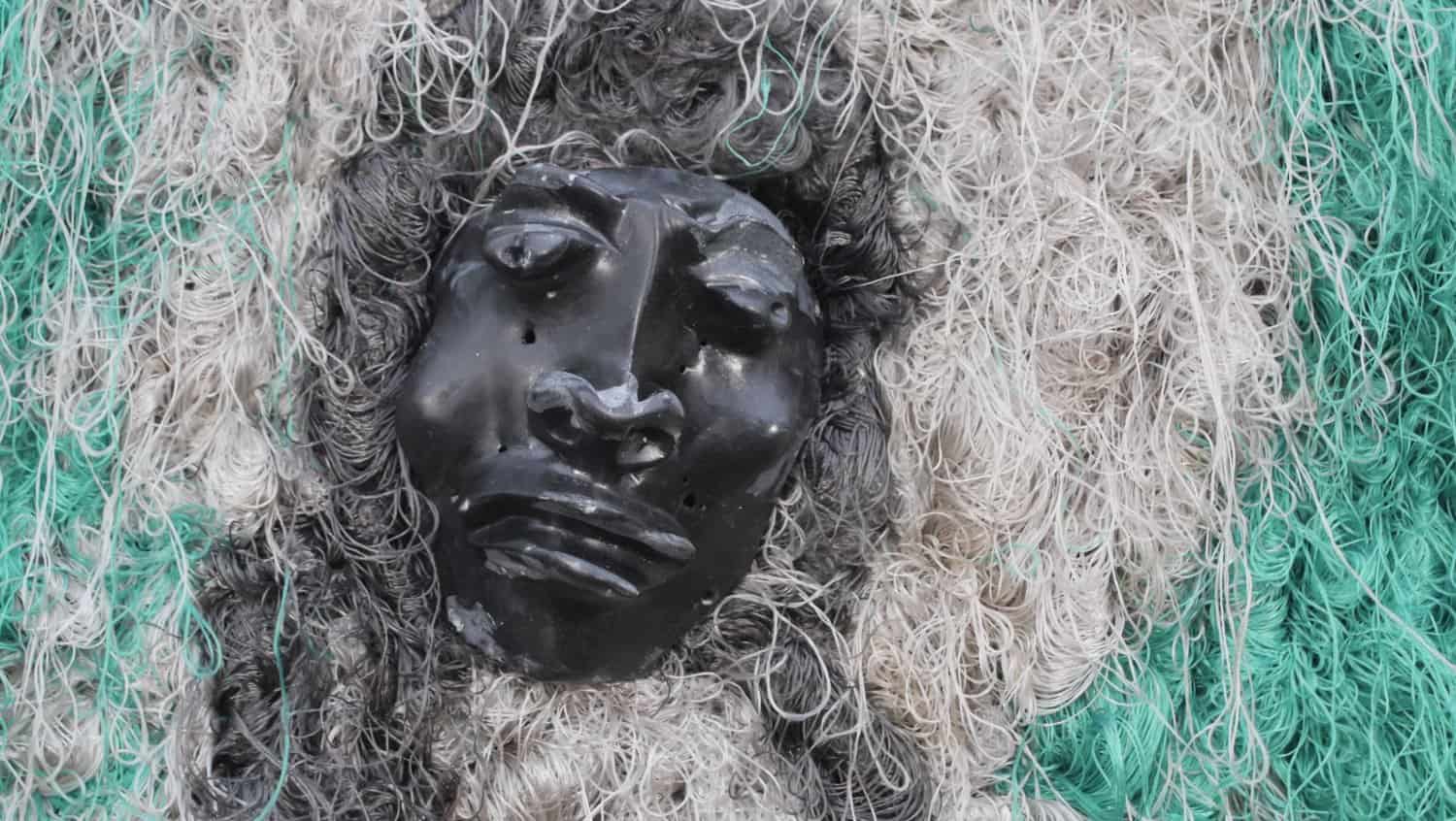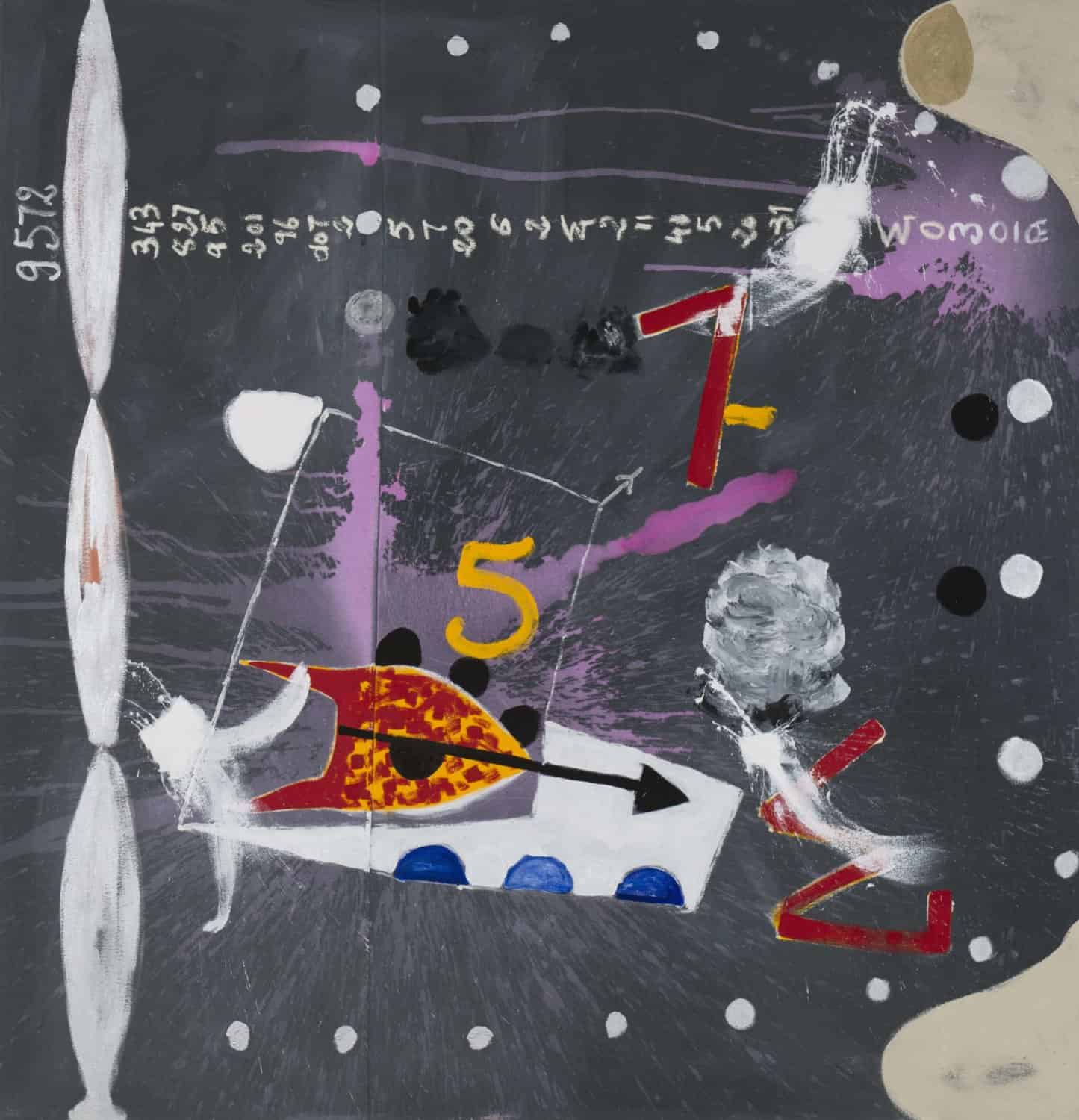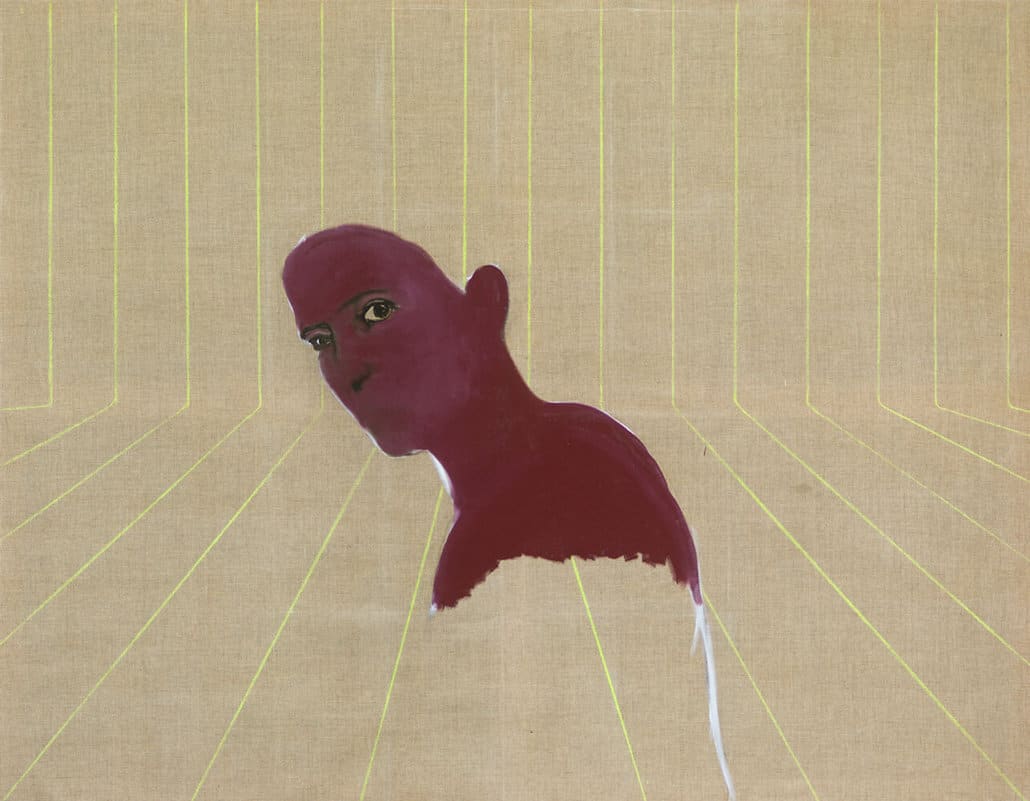Dalila Dalléas Bouzar, SORCIÈRES #9, 2019. Technique mixte sur toile Mixed media on canvas, 114 x 146cm. Courtesy of Gallery Cecile Fakhoury.
Don’t miss the last days of Abu Dhabi Art which takes place this year in virtual form via abudhabiart.ae
As part of this year’s fair, renowned curator, professor, art critic and author Simon Njami brings together seven galleries presenting artists from the African continent, all showing for the first time ever at Abu Dhabi Art, in an exhibition entitled ‘The Day After’.

Terrence Musekiwa, Implantation kutumbuka, 2019. Spring stone and sewn silk sewn on cotton, Approx: 167 x 91 x 18cm. Courtesy of Catinca Tabacaru Gallery.
Galleries in ‘The Day After’ include Afriart Gallery (Kampala) representing Richard Atugonza and Ahmed Abushriaa; Catinca Tabacaru Gallery (Bucharest) representing Chioma Ebinama and Terrence Musekiwa; Galerie Cécile Fakhoury (Ivory Coast) representing Ouattara Watts and Dalila Dalléas Bouzar; Galerie Maia Muller (Paris) representing Hassan Musa and Myriam Mihindou; Galerie MAM (Cameroon) representing Patrick Yonkeu and Joel M’pahdoo; Septieme Gallery (Paris) representing Kaloki Nyamai and Yvanovitch Mbaya; and OH Gallery (Senegal) representing Gopal Dagnogo and Aliou Diack.
The curator shares his thoughts on ‘The Day After’ with ART AFRICA as the fair comes to a close:
“We are facing strange times where the order of things (or what we thought were the order of things) seems upside down. Some people have named this space of uncertainties “the After World”, which is supposed to replace the “world before”. But the question of a new world seems very problematic to me. Is Covid19 going to be able to change our realities? I am not talking about the fact that we cannot travel as we would like to anymore or that we cannot hug and are forced to walk the streets with a mask and so on.

Ouattara Watts, African beats, 2018. Mixed media on canvas, 205 x 214cm.
But yet, there are facts we tend to forget when we are not directly concerned: viruses have always been around. The only difference, this time, is that it did not spread only in the non-western countries but also in the West, and the West is scared, as it has never been since World War II.
In Africa and in most non-western countries, the effects of the pandemic can be read through another grid. Time is perceived differently. It is not conceived according to some immutable rules or linear logic. It corresponds better to the definition of time given by the French philosopher Maurice Merleau-Ponty: “Time remains the same because the past is an ancient-future and a recent present, the present a future past and a recent future, future, at last, is a present and even a past to be, in other words, because each dimension of time is treated or aimed at as something else than itself, which means, finally, because, at the heart of time, there is a gaze…

Myriam Mihindou, Patère, 2015. Silk, etymologies, hemp, cotton, feathers, 70 x 100cm. Courtesy of Galerie Maïa Muller.
Hence time can never be what it seems to be. It has, in order to find a useful meaning, to be reflected by a gaze. The day after can only occur if it is related to subjectivity. And my conviction is that artists are the sole bearers of an unstained subjectivity. This is what this exhibition intends to show.”
To discover works included in Simon Njami’s exhibition visit abudhabiart.ae and explore galleries included in ‘The Day After’.





